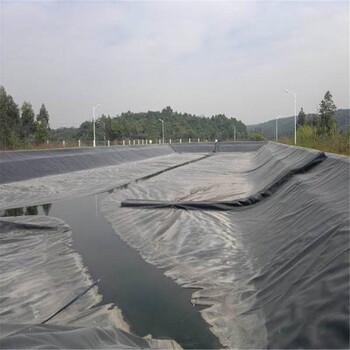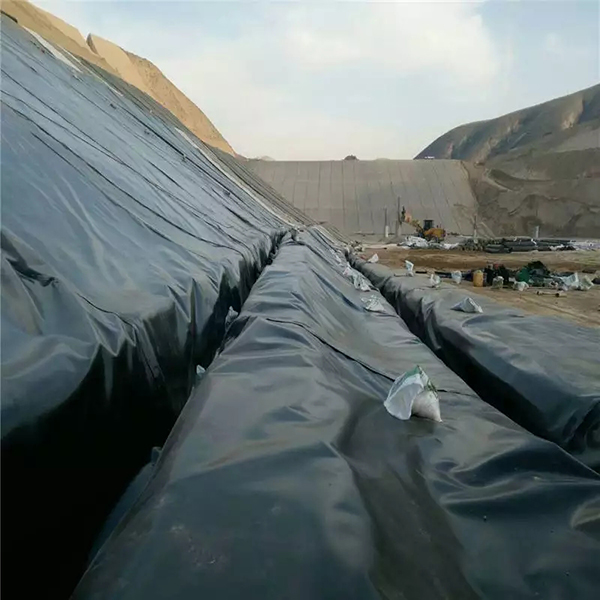Geomembranes play a key role in reservoir seepage prevention, with their core function being to block the water infiltration path, ensuring the reservoir’s water storage capacity and structural safety. The specific functions are mainly reflected in the following aspects:
1、 Efficiently block leakage channels
Reservoir leakage is the core issue affecting its function, which may be caused by geological defects such as cracks, faults, and permeable layers in the dam body, foundation, or bank. Geomembranes have an extremely low permeability coefficient (usually less than 1 × 10 ⁻¹¹ cm/s), which can directly form a physical barrier on the leakage path, preventing water from flowing through the pores or cracks of the rock and soil mass. For example, after laying geomembrane on the dam foundation, it can block the connection between groundwater and reservoir water, avoiding seepage damage to the dam foundation; Laying on the reservoir bank can reduce the leakage of reservoir water to surrounding mountains and ensure the effective storage capacity of the reservoir.
2、 Protect the stability of the dam structure
Long term leakage of water bodies may cause seepage deformation of dam bodies, such as piping, soil flow, etc., which can lead to dam collapse in severe cases. Geomembrane is laid on the surface or internal anti-seepage structure of the dam body, which can disperse water pressure and reduce the erosion of the dam filling by seepage water flow. At the same time, its good tensile strength and elongation can adapt to small deformations of the dam body during water level changes and foundation settlement, avoiding cracking of the anti-seepage layer and maintaining the integrity of the dam structure.
3、 Adapt to complex geological conditions
Reservoir construction often faces complex geological environments, such as soft soil foundations, weathered rock layers, etc. The flexibility of geomembranes enables them to tightly adhere to irregular foundation surfaces, fill small gaps, and are particularly suitable for uneven areas that are difficult to handle with traditional rigid anti-seepage materials such as concrete. In addition, for existing reservoirs, local leakage points can be repaired by laying geomembranes without the need for large-scale excavation, reducing project costs and the impact on reservoir operation.
4、 Extend the service life of the reservoir
Geomembrane has good weather resistance, corrosion resistance and anti-aging performance, can resist ultraviolet radiation, water temperature change and chemical erosion in water, and can maintain anti-seepage performance for a long time. This reduces frequent maintenance caused by leakage, extends the normal operation cycle of the reservoir, and ensures its long-term comprehensive benefits such as flood control, irrigation, and water supply.
5、 Enhance the economic efficiency of the project
Compared to traditional techniques such as concrete impermeable walls, geomembrane materials have lower costs, are easier to construct, can significantly shorten the construction period, and reduce the total project investment. At the same time, its lightweight characteristics reduce the load on the dam foundation, especially suitable for the reinforcement and renovation of small and medium-sized reservoirs or dangerous reservoirs, achieving maximum economic benefits while ensuring the anti-seepage effect.
In summary, geomembranes have become an indispensable key material in modern reservoir engineering through multiple functions such as efficient anti-seepage, structural protection, and environmental adaptation, providing important guarantees for the safe and stable operation of water conservancy facilities.
Post time: Jul-04-2025



